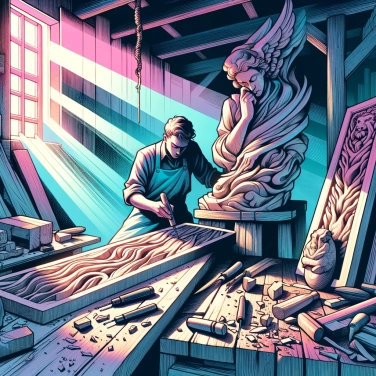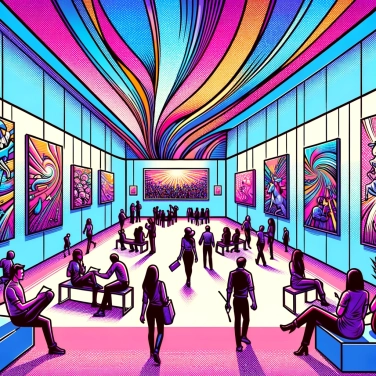Shadows and light are crucial in wood carving as they allow to enhance the shapes, create relief, and give realism to the final work.

The variations of shadows and lights on a wooden sculpture create essential contrasts: they provide volume by allowing the eye to clearly perceive depths and reliefs. A well-placed hollow becomes significantly deeper with a marked shadow, while a bump or relief stands out more with effective lighting. Without these plays of contrasts, your sculpture would appear dull, uniform, flat, lacking relief or life. Sculptors therefore use this simple trick to guide the gaze and make the 3D structure immediately understandable: where it is dark, it is recessed; where it is light, it is raised. The contrasts direct the gaze, make the sculpture dynamic and interesting, and above all, give it its true dimension.
The games of shadow and light reveal all the small details carved into the wood. Proper lighting allows the grooves, notches, and fine textures to stand out clearly, playing with contrasts. For example, if you carve a face, wrinkles or hair will come to life thanks to the cast shadow. Conversely, poor lighting flattens the details, rendering everything flat, without relief or life. It is therefore these subtle differences in light intensity that make a wooden sculpture appear truly alive to our eyes.
The play of shadow and light is very important in wood sculpture, as it directly affects the viewer's perception of the artwork. Soft light, with delicate shadows, brings a sense of tranquility or gentleness. Conversely, a stronger contrast between shadow and light creates a dramatic, intense, or even mysterious atmosphere, capable of evoking emotions such as anxiety, curiosity, or wonder. The careful placement of shadows can even suggest subtle emotions, enhancing the expressive power of the sculpture without the need to add too many precise details.
Natural light, like that of the sun, gently and gradually highlights the curves and volumes of a wooden sculpture throughout the day. You can observe how the shapes subtly evolve according to the changing light, revealing certain details in the morning that you might not notice at noon or in the evening. In contrast, carefully placed artificial lighting allows you to deliberately emphasize key areas, giving sculptures a dramatic intensity or highlighting a specific feature. It makes the surface of the wood more alive, more expressive. Playing with indirect or direct lighting allows the sculpted forms to appear at times soft and subtle, at other times strong and pronounced. The balance between these two types of light truly brings out the full potential of a wooden sculpture.
The dramatic effect of chiaroscuro, made famous in painting by Caravaggio, is also used by wood sculptors to enhance the emotional intensity of their works through the meticulous interplay of shadows and lights.
Ancient wooden sculptures were sometimes valued not only for their artistic quality but also for their ability to cast symbolic shadows during specific periods of sunlight exposure, such as the equinoxes or solstices.
Using a grazing light, a technique called 'tangential lighting', artists and restorers are able to detect the slightest imperfections or damage on a sculpture in order to facilitate its restoration or conservation.
In ancestral sculpting traditions, particularly Japanese ones, artisans could adjust their work according to the natural lighting expected in the final exhibition space to optimize its visual impact.
Emphasized shadows can be created by playing with the direction and intensity of light. Typically, oblique or side lighting will enhance the projected shadows, adding depth and volume. Additionally, choosing a high contrast between light and shadow will further highlight specific details of the sculpture.
Yes, absolutely. Changing the lighting greatly affects the emotional perception of a sculpture. A warm, dim light can provide a calm or intimate atmosphere, while a cold and intense light can evoke more dramatic or severe feelings in the observer.
Without adequate lighting, shadows do not form correctly, which hinders the perception of relief, depth, and volume. Properly oriented lighting is crucial for bringing the sculpture to life and revealing its intrinsic shapes and artistic subtleties.
The best light source depends on the desired effect. Direct and warm lighting accentuates textures and adds a dramatic effect, making it ideal for highlighting the details of fine sculpture. In contrast, indirect or diffused lighting allows for a more subtle and gentle enhancement that is better suited to curved shapes and smooth finishes.
Sure! Here’s the translation: “Yes, natural light varies depending on the time of day and the seasons, which can create interesting changing effects on the sculpture. Artificial lighting, on the other hand, offers precise and permanent control, useful for highlighting specific areas or creating a consistent and controlled ambiance according to the wishes of the artist or curator.”

No one has answered this quiz yet, be the first!' :-)
Question 1/5